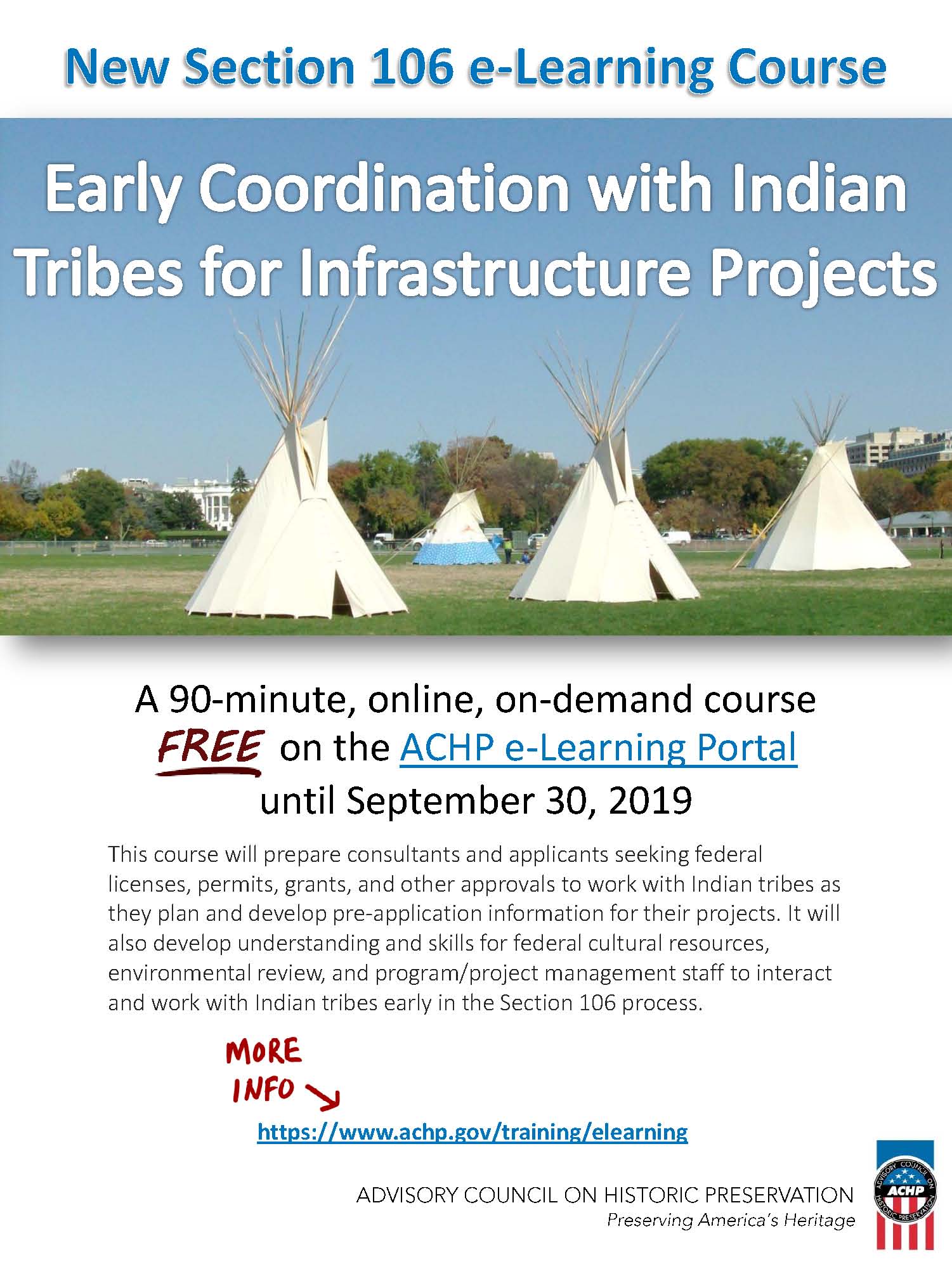The Advisory Council on Historic Preservation is now providing a new online/on-demand course, Early Coordination with Indian Tribes for Infrastructure Projects. The 90-minute course can be completed over a 30-day period.
The course is geared toward applicants for federal permits, licensing, or funding as well as federal permitting agencies and staff.
Section 106 of the National Historic Preservation Act is invoked whenever a federal undertaking poses the potential of an adverse effect on a property listed on, or considered eligible for listing on, the National Register of Historic Places maintained by the National Park Service. Under the NHPA, if the potential for adverse effects exists, federal agencies must consider how to avoid, minimize, or mitigate the impact on historic properties in consultation with key stakeholders, including Indian Tribes.
Federally recognized Indian tribes - including Alaska Native Villages, Regional Corporations, or Village Corporations - have a right to participate in the Section 106 process in a manner that recognizes their expertise in the identification and evaluation of historic properties of religious and cultural significance to them. The process is often more effective if historic preservation in general and tribal involvement in particular are included early in project planning, even before federal agencies initiate the Section 106 review process.
Early Coordination with Indian Tribes for Infrastructure Projects will prepare applicants, and their consultants, seeking federal licenses, permits, grants, and other approvals to work with Indian tribes as they plan and develop pre-application information for their projects. It will also develop understanding and skills for federal cultural resources, environmental review, and program/project management staff to interact and work with Indian tribes early in the Section 106 process.
The course is in keeping with the Administration’s directive to complete environmental reviews within two years and stresses that better coordination early on makes the process smoother in an effort to ensure historic preservation is considered during the pre-application process.
